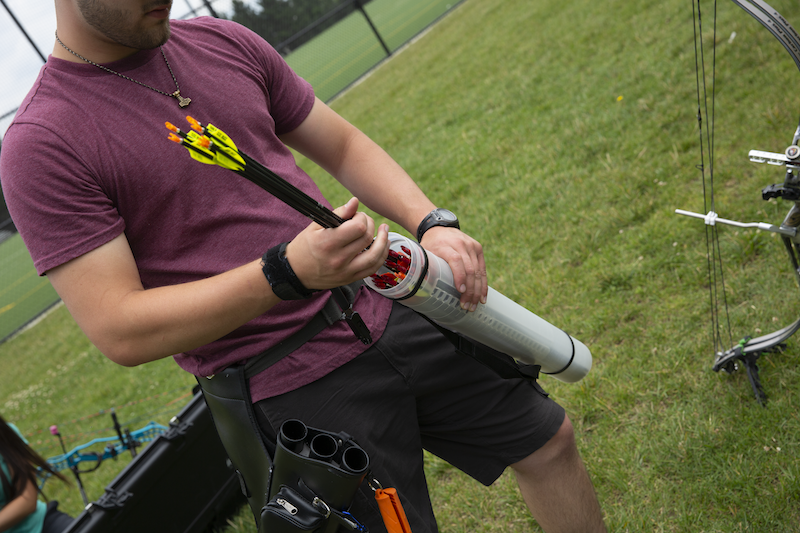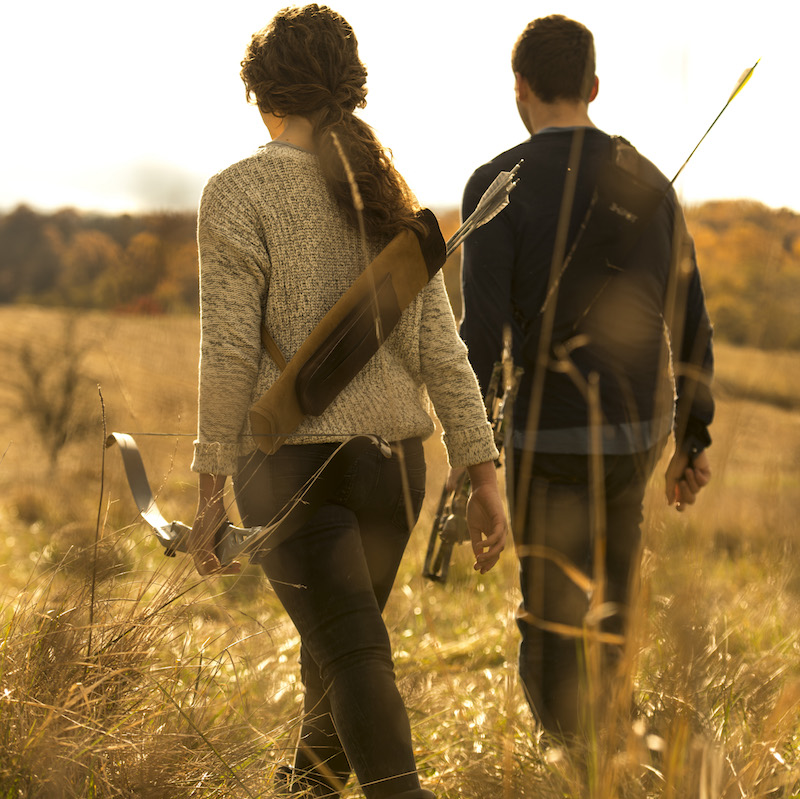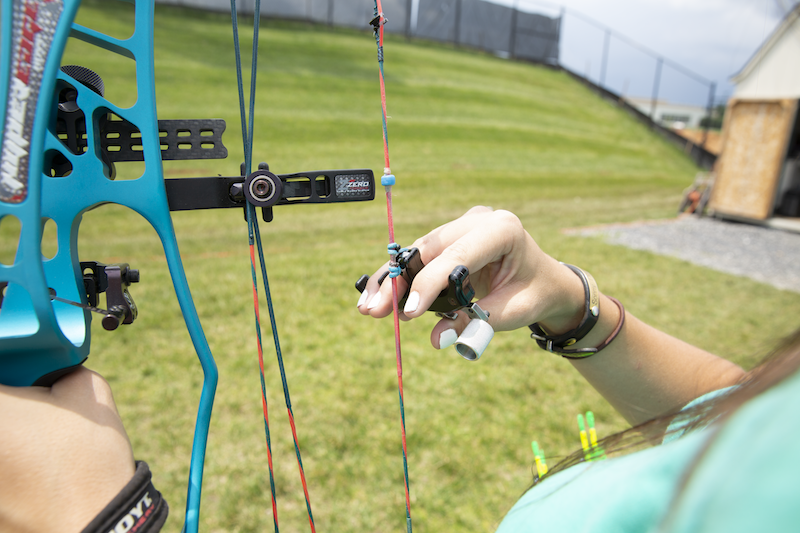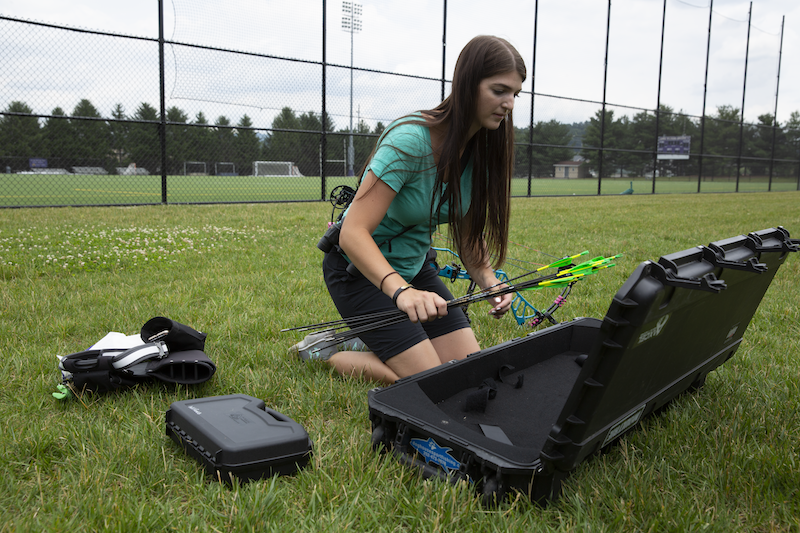When it comes to archery equipment, you have endless options that fit every budget, skill level, purpose and person. To decide which options to choose, start with a visit to your local archery store. The staff will help you pick a bow that fits your needs. After that, it’s time to add your accessories.
Arrows

Once you’ve selected a bow, you’ll need the correct arrows. Choose arrows that match your bow and your chosen archery discipline. You can select from carbon, aluminum and wood arrow shafts with your choice of fletching.
Fletchings stabilize the arrow in flight, and come in two basic materials: feathers and vanes.
Plastic fletchings are called vanes. Vanes are usually preferred for compound bows and modern recurve bows with an elevated arrow rest. Vanes are popular because they’re durable and waterproof.
Feathers are a great choice when you need maximum forgiveness and arrow stability. Traditional and competitive archers often choose feathers when shooting at indoor tournaments.
You’ll make lots of decisions when selecting arrows, but count on the expertise at your local archery shop to make the process easy. Just tell the technician your budget, bow specifications and the type of shooting you enjoy (field, 3-D, indoor, target archery).
Quiver

A quiver’s job is to hold your arrows while you’re shooting. You can choose a back quiver and channel your inner Robin Hood, or go for the waist quiver for your belt or a bow quiver that snaps onto your bow.
Release and Finger Tab

Release aids and finger tabs protect your fingers and help you release the bowstring. A mechanical release aid uses a trigger system. The release attaches to the bowstring with jaws or a clip. The bowstring on most compound bows has a D-loop, which is a short cord tied into a loop just below where the arrow’s nock grips the string. The archer’s release aid clips onto the D-loop.
Once the release is attached to the D-loop, the archer draws the bow, aims and squeezes the release aid’s trigger with the thumb or index finger. With the proper amount of pressure on the trigger, the release aid lets go of the string, and the arrow flies to the target. The release aid’s trigger mechanism can help deliver astonishing accuracy.
Mechanical releases come in two basic styles: wrist-strap and handheld. Wrist-strap releases attach to your wrist with a buckle or Velcro strap. Most beginning compound archers start with this release style because it’s affordable and easy to use.
With a finger release, archers use their index, middle and ring finger to grip the bowstring. The archer grips the bowstring at the first joint of these three fingers. Next, they draw the bow, aim and then relax their fingers to let the bowstring slip away.
Recurve and longbow archers use a glove or finger tab to shoot their bows comfortably. Gloves and finger tabs are made of leather, and come in several sizes.
A finger tab fits between your fingers and the bowstring. The tab should cover your three fingers but not hang over your fingertips. For a custom fit, trim the finger tab with scissors.
A shooting glove looks like a leather work glove, but it only covers the tips of your three shooting fingers. The fingertip sections carry leather strips, and the glove itself secures around your wrist. Gloves come in many sizes, and you can test-shoot with them at an archery store.
Arm Guard

When you release a bowstring, it passes by your forearm – and this can really sting. Use an armguard to protect your forearm and keep your shooting pain-free.
Bow Case

Bow cases protect your bow when traveling between home and the range. Unprotected bows can be dropped onto cement or knocked against a car, door or wall while you move your equipment.
Hard cases offer bows the most protection. Most are rated for airline travel, which means you can take your bow on vacation or to a tournament. Some models have wheels for easy rolling and maneuvering and can be locked for safekeeping.
Soft cases, however, meet most archers’ needs. They’re lighter than hard cases, protect your bow from nicks and dings, and keep your gear together and organized. Many soft cases are rated for airline travel, while others are better suited for road trips.
Tools and Other Accessories

Other items you might need:
- A bow stringer for stringing your recurve or longbow
- Allen wrenches for adjusting your sight or maintaining your bow
- A bow stand to rest your bow on when you’re not shooting it
- Arrow lube and arrow puller to easily remove your arrows from the target
- String wax to keep your bowstring looking like new
With these essentials, you’ll have everything you need to enjoy archery at home or the local archery range. You can pick them up at a nearby archery shop. To find an archery shop near you click, here.




